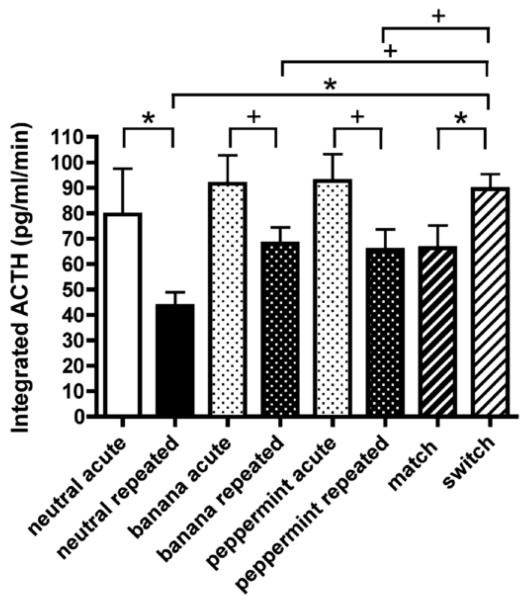Figure 1.
Habituation of HPA responses to repeated restraint is disrupted by exposure to an unfamiliar odor during restraint. Eight groups of animals were either unstressed or repeatedly restrained for 30min per day for 7 days prior to a test 30 minute restraint on day 8. Repeatedly restrained animals which were not exposed to a specific odor during prior restraint (other than the neutral odor of the housing room; “neutral repeated” group) exhibited significantly habituated integrated ACTH as compared to acutely restrained animals which were not exposed to a specific odor (“neutral acute” group), as expected. Repeatedly restrained animals exposed to only one of either banana odor (“banana repeated” group) or peppermint odor (“peppermint repeated” group) during all 8 days of prior restraint exposures exhibited significantly habituated HPA activity to the 8th restraint as compared to acutely restrained animals exposed to banana (“banana acute” group) or peppermint (“peppermint acute” group). Critically, repeatedly restrained animals exposed on day 8 to restraint with the same odor as the previous seven days (“match” group) had significantly lower HPA activity than repeatedly restrained animals exposed to the alternate odor during restraint on day 8 (“switch” group). This finding demonstrates the apparent context specificity of habituated HPA responses (see Criteria 1 and 7). * indicates p ≤ 0.05; + indicates p ≤ 0.09. Data are expressed as mean ± SEM. From Grissom et al., 2007, with permission.

